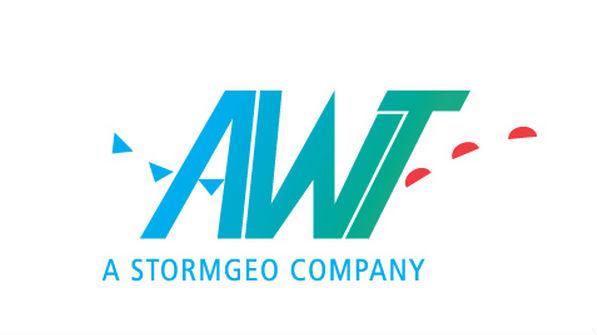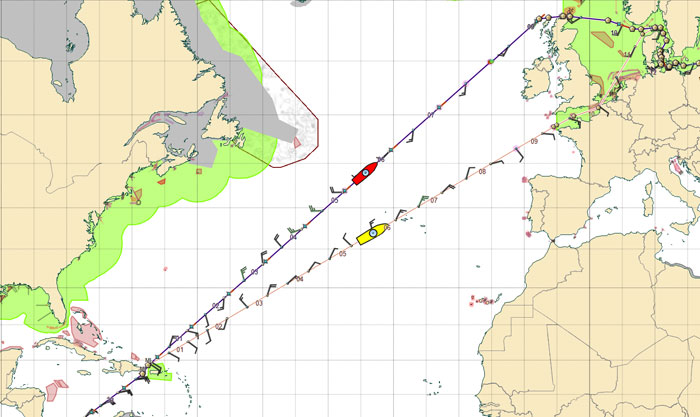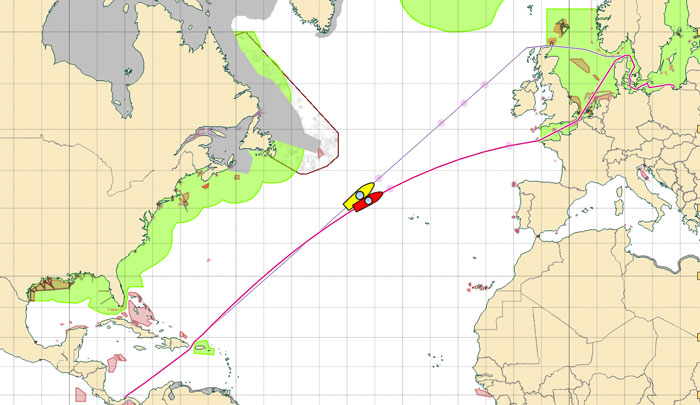Route Spotlight: Considering EEOI and Cost Savings

As you analyze the energy efficiency of your fleet voyages and EEOI calculations, it is also helpful to recognize the impact of sophisticated weather routing to reduce CO2 emissions and provide a shorter route to save costs. The IMO recognizes weather routing as a fuel saving tool, and this should be considered along with EEOI calculations as you look for strategic solutions to invest in.
The EEOI is a measure of the fuel consumed in relation to the cargo carried and distance sailed. In the example below, it can be seen that a master intended a route of 5811 NM, but sailed an AWT recommended route of 5603 NM. The cargo carried was of course the same regardless of the route selection. The ship consumed 565 MT of fuel on the actual route, as compared to 653 MT on the intended route. The ratio of fuel consumed per ton-mile was 0.112 on both routes! The ratio results, while the same, may seem surprising. But in fact, the ship consumed and emitted less CO2 when sailing the AWT recommended route.
It is of course the same ship on both routes, but for EEOI purposes, the efficiency of the voyage and lower fuel consumption along the recommended route is offset by the shorter distance.
In the following Route Spotlight, the efficiency of weather routing can be seen on a voyage from the Caribbean to the Baltic for a refrigerated cargo ship loaded with fruit and bananas.
Obviously, there are serious commercial pressures to deliver the product in a timely and cost-efficient manner. Prior to the receipt of the recommended route, the master advised his intended route which called for the following:
Rhumb lines via the following way points:
-09 24.5' N 079 55.1' W
-09 47.3' N 079 37.5' W
-18 00.0' N 068 20.0' W
-19 16.2' N 067 29.8' W
-49 00.0' N 006 00.0' W
Then, using shortest way points via English Channel/ North Sea/ Great Belt and Baltic Sea.
In the image below, AWT recommended the more northerly route for the voyage (red ship) and this was closely followed as compared to the master’s intended route (yellow ship).

With the departure date in late March, the spring season had already commenced; however, this does not necessarily translate to good weather in the northern latitudes of the North Atlantic. Here storms are known to ignore the technical change from winter to spring, and high winds and waves may persist well into the spring season providing additional challenges to a voyage.
Along the recommended northerly route, daily attention can be paid to the route, and one can see that the route to the north of Scotland was quite close to the great circle track to the English Channel. Therefore, if the weather deteriorated to the north, the channel was a viable option with no mileage added to the intended route. However, in this case, it was not necessary.

Along the actual route (as recommended by AWT) of about 14.5 days, the ship consumed 565 MT of fuel at 39 MT/day for propulsion on a performance speed of 16.75 knots.
To achieve the same arrival time along the master’s intended route via English Channel, a performance speed of 17.9 knots would have been required and about 45 MT/day, with the total fuel consumption at about 653 MT.
In this Route Spotlight, weather routing alone saved about 15.5% of the fuel costs. Add to this the fact that the time in the ECA Zone would have been increased by 18 hours along the master’s intended route. It is evident that with heavy fuel oil (HFO) costs of $350/ton and with a standard low sulphur gas oil (LSGO) price differential, the monetary savings for the voyage was approximately $40,000. In addition to savings of $40,000 in fuel costs, the recommended route reduced CO2 emissions by around 265 MT. As you plan how to comply with new IMO regulations, remember the benefits of strategic, cost-effective routing solutions to your bottom line.
By George Schlinkert, VP Routing Services
The products and services herein described in this press release are not endorsed by The Maritime Executive.
